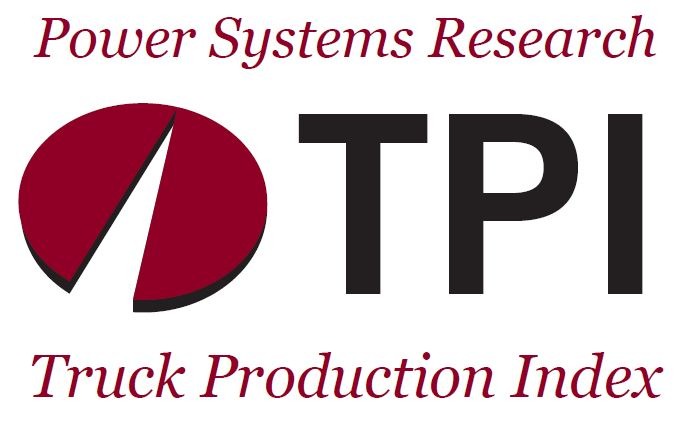St. Paul, MN— The Power Systems Research Truck Production Index (PSR-TPI) dropped from 124 to 112, or 9.7%, for the three-month period ended Sept. 30, 2018, from Q2 2018. The year-over-year (Q3 2017 to Q3 2018) gain for the PSR-TPI was, 110 to 112, or 1.8%.

Commercial vehicle demand in 2018, has been particularly strong in North America, Brazil, Russia and India while demand is expected to decline sharply in China after very strong sales in 2017. Demand in Japan/Korea is also in decline. Outside of China and Japan/Korea, medium and heavy commercial vehicle demand in the other regions is trending higher this year.
The PSR-TPI measures truck production globally and across six regions: North America, China, Europe, South America, Japan & Korea and Emerging Markets.
This data comes from CV Link™, the proprietary database maintained by Power Systems Research.
Commercial vehicle demand globally in 2018, has been particularly strong in North America, Brazil, Russia and India while demand is expected to decline sharply in China after very strong sales in 2017. Demand in Japan/Korea is also in decline. Outside of China and Japan/Korea, medium and heavy commercial vehicle demand in the other regions is trending higher this year.
In North America, production levels for class 8 trucks continue to be strong, driven by record order levels that are expected to continue well into 2019. Order boards basically are filled through H1 2019. The strong economy is driving the need to replace or expand the fleets. While not as strong as the heavy truck segment, the medium truck segment is having another good year, driven largely by strong consumer and vocational demand.
Medium and heavy truck production is expected to increase by 4.8% in Greater Europe this year over 2017. Production in Western Europe should increase by 1.8%, while production in Eastern Europe could increase by 15.7% as the fleets continue to replace their aging trucks.
After weak demand in Eastern Europe over the past few years a recovery in demand is in full swing. While demand in Western Europe has slowed somewhat this year, it continues to be historically strong.
Strong demand in South Asia, led by demand in India, should boost production for medium and heavy trucks in South Asia this year by 10% over 2017. Production in India is expected to increase by 11.1% this year after a soft 2017, primarily due to the implementation of the BS-IV emission regulations which increased the cost of the trucks. Additional infrastructure spending is expected to boost demand in India during the next few years.
After several years with very low medium and heavy truck demand, domestic and export sales in South America started to improve last year and South American production is expected to increase by 12.9% in 2018, led by Brazil. While truck exports are a main reason for this increase, domestic demand also has improved significantly during the past year. Demand in Argentina is expected to soften as the country struggles with its economy.
Medium and heavy truck demand in Japan/Korea is expected to continue its decline by falling 9.7% this year as softness in domestic demand continues to impede the manufacturers. Japanese production should decline by 9.7% while production in South Korea should fall by 7.1%, compared with last year. Production continues to be transferred from Japan and Korea closer to their traditional export markets.
Because of China’s GB1589 regulations to control overloading of trucks last year, commercial truck demand in that country was very strong in 2017 and into the first eight months of 2018. However, truck capacity is now relatively high and with higher truck prices partly due to the cost of emission technology and lower freight rates, demand is expected to decline in Q4 2018 and during the next few years. PSR
Detailed comments are contained for each region with a corresponding regional graph in the attached downloadable PDF.
The PSR Truck Production Index is produced by Chris Fisher, PSR Senior Commercial Vehicle Analyst and Jim Downey, PSR Vice President- Global Data Products.


